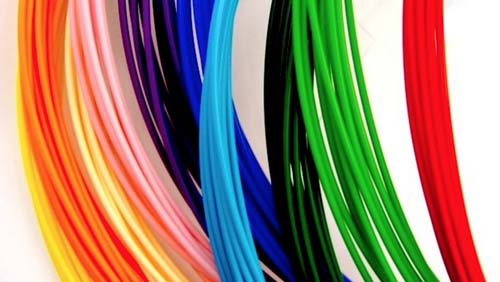Thank you for visiting this website which was set up to display 'things' which I have produced using desktop 3D printer technology.
The word 'thing' by the way is the common term amongst members of the 3D printing community for the enormous variety of objects which desktop 3D printers can produce. It derives from the name of the oldest and largest 3D printing file sharing site, Thingiverse, on which many - but not every one - of the items described on this site can be found. The design files for the vast majority of the things here are licensed under the Creative Commons - Attribution license which effectively makes them free to distribute without infringing copyright provided the original designer is given appropriate attribution for his/her design work.
Desktop 3D printing involves producing items one at a time rather than bulk production although if relatively small and more than one will fit on the build plate, which is in the order of 200mm square, it is not uncommon to produce two, three or four things at a time. As the strap line at the top of this page says, there is no mass production involved which makes every thing I make and sometimes sell, unique.
The technology is relatively simple if you think about it in stages:
- Plastic filament which comes on reels and looks like a long length of spaghetti is heated up. It melts and is then extruded, (pushed), through a small nozzle.
- As the molten filament emerges, the nozzle is driven around a flat surface and 'draws' what will become the first layer of our object - a bit like icing a cake. As it is deposited, the plastic solidifies.
- First layer done, the nozzle moves up and draws the second layer, depositing molten plastic onto the first layer.
- This layering is repeated until the final object emerges.
Of course, this makes production very time consuming especially when you consider that each layer is typically only 0.3mm in height.

You will see that some of the things I have made have two or more colours - how is that done?
Things which appear 'stripey' will have been layered using different colours of filament - the nozzle is paused at some point during the process and the filament changed for another colour before sending the nozzle on its way again. Sometimes this is done three, four, five or even more times during production of an object - take a look at 'Binary Roots' in the Decorative category. Another way of bringing different colours to an object is by printing each component in a different colour. The iPad/tablet stand shown in the Functional category for example has had the sides printed in mellow yellow and the connecting pieces in space marine blue.
Please browse the site to view the things which I have made. If you have any questions, want to buy anything, wish to enquire about having other items produced which you have designed yourself or which you have seen on Thingiverse or elsewhere - no problem, just send us a note via the 'Contact Us' link.
Thank you for your visit.

